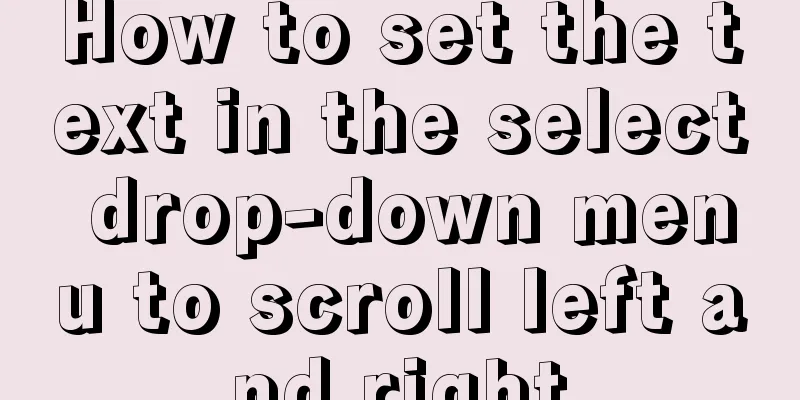The Complete Guide to Grid Layout in CSS

|
Grid is a two-dimensional grid layout system. With it, we can easily implement complex layouts without using CSS Grid Layout is good at dividing a page into several main areas, and defining the size, position, hierarchy and other relationships of these areas (provided that HTML generates these areas). Like a table, the grid layout allows us to align elements in rows or columns. However, for layout, grids are more likely to be done or easier than tables. Grid layout concepts Before learning, you need to understand the following concepts of grid. Grid Tracks A grid track is the space between two grid lines. They are defined in the grid by using the properties
There are two rows and three columns in the above picture. A row or a column is called a track. Grid Lines Using Grid lines can be addressed by their numbers. In left-to-right languages,
Grid Cell In
Grid Areas A grid area is a rectangular area in a grid consisting of one or more grid cells. In essence, the grid area must be rectangular. For example, it is not possible to create T-shaped or L-shaped grid areas.
Gutters Grid gutter is the spacing between grid tracks and can be created in Grid Layout using
Using Grid Layout Similar to flex, to use grid layout, you first need a container. You can get a grid container by setting Properties on containers Grid Template After creating the grid container, we can define how many rows and columns the grid has, and the size of each row and column. grid-template-rows We use The
The The grid-template-columns It is similar to
.container {
display: grid;
grid-template-columns: 40px 50px auto 50px 40px;
grid-template-rows: 25% 100px auto;
}
.container {
display: grid;
grid-template-columns: 1fr 1fr 1fr;
grid-template-rows: 100px 100px;
}
Functions available in Grid In the Grid layout, we can also use the following 3 functions repeat() The For example, in the above If the container has an explicit size or a maximum size, then the number of repetitions is the largest possible positive integer that does not cause the grid to overflow its grid container. If any number of repetitions would overflow, the number of repetitions is 1.
Same behavior as
#container {
display: grid;
grid-template-columns: repeat(2, 50px 1fr) 100px;
grid-gap: 5px;
box-sizing: border-box;
height: 200px;
width: 100%;
background-color: #8cffa0;
padding: 10px;
}
#container > div {
background-color: #8ca0ff;
padding: 5px;
}
minmax() Defines a closed interval with a length and width range. It accepts two parameters, minimum and maximum. It returns the value in this interval. For example, fit-content() It is equivalent to It takes a maximum value from the minimum value of the content and the parameter, and then takes a minimum value from the maximum value of the content. That is, when the content is small, it takes the content length. If the content is large and the content length is greater than the parameter length, it takes the parameter length. grid-template-areas This attribute grid block needs to be used with When it is a string, each given string will generate a row, and each cell separated by a space in a string will generate a column. Multiple cells with the same name that span adjacent rows or columns are called a grid area. Non-rectangular grid blocks are invalid.
#page {
display: grid;
width: 100%;
height: 250px;
grid-template-areas: "head head"
"nav main"
"nav foot";
grid-template-rows: 50px 1fr 30px;
grid-template-columns: 150px 1fr;
}
#page > header {
grid-area: head;
background-color: #8ca0ff;
}
#page > nav {
grid-area: nav;
background-color: #ffa08c;
}
#page > main {
grid-area: main;
background-color: #ffff64;
}
#page > footer {
grid-area: foot;
background-color: #8cffa0;
}
grid-template It is an abbreviation of Its value can be divided into three cases:
.page {
grid-template: [header-top] "aa a" [header-bottom]
[main-top] "bb b" 1fr [main-bottom]
/ auto 1fr auto;
}
/*
line-names is optional, custom name, need to be wrapped in brackets, it is actually equivalent to the comment string grid-area associated value track-size the size of this line */
#page {
display: grid;
width: 100%;
height: 200px;
grid-template: [header-left] "head head" 30px [header-right]
[main-left] "nav main" 1fr [main-right]
[footer-left] "nav foot" 30px [footer-right]
/ 120px 1fr;
}
header {
background-color: lime;
grid-area: head;
}
nav {
background-color: lightblue;
grid-area: nav;
}
main {
background-color: yellow;
grid-area: main;
}
footer {
background-color: red;
grid-column: foot;
}
grid-row-gap / row-gap Used to set the gutter size between row elements. Its value can be length, percentage or CSS Grid Layout was originally defined using the grid-row-gap property, which is now being replaced by row-gap. However, to be compatible with browsers that don't support the row-gap property, you need to use the property with a prefix.
.box{
grid-row-gap: 1em;
}
grid-column-gap / column-gap Used to set the gutter size between element columns. Its value can be length, percentage or The default spacing for Like
.page {
grid-column-gap: 1em;
}
grid-gap / gap It is an abbreviation of the above two properties, and the syntax is It was also gradually replaced by
#grid {
display: grid;
height: 200px;
grid-template: repeat(3, 1fr) / repeat(3, 1fr);
gap: 20px 5px;
}
#grid > div {
background-color: lime;
}
Implicitly created rows and columns CSS grid automatically adjusts the position of each item on the grid based on the size and span of the surrounding items. for example:
.box {
display: grid;
grid-template: 25px / 100px 160px;
background: #000;
}
.box * {
background: #ccc;
}
.box *:nth-child(even) {
background: #777;
}
We have only defined one row and two columns. But we have 5 child elements. CSS Grid decides to expand them into the implicitly created space, and the columns in the newly created implicit row automatically inherit the row height from the previously specified The four properties grid-auto-rows Specifies the size of implicitly created rows. Its values can be:
Its value is the same as
.box {
display: grid;
grid-template: 25px / 100px 160px;
gap: 10px 20px;
grid-auto-rows: 50px;
background: #000;
}
.box * {
background: #ccc;
}
.box *:nth-child(even) {
background: #777;
}
grid-auto-columns Specifies the column width of the implicitly created grid. Its value is the same as
#grid {
height: 100px;
display: grid;
grid-template-areas: "a a";
grid-gap: 10px;
grid-auto-columns: 200px;
}
#grid > div {
background-color: lime;
}
grid-auto-flow Controls how the automatic layout algorithm works, specifying exactly how the elements being automatically laid out are arranged in the grid. If we write several The values for
You can also add the This keyword specifies that the automatic layout algorithm uses a "dense" packing algorithm, which attempts to fill the gaps left by smaller elements in the grid. This will fill in the gaps left by the larger element, but may also disrupt the original order of appearance. If it is omitted, a "sparse" algorithm is used, and the layout algorithm only moves "forward" when laying out elements in the grid, never going back to fill in the gaps. This ensures that all Auto Layout elements appear "in order", even if this may leave gaps that are filled by later elements.
grid As with other shorthand properties, if any of the sub-properties are not declared, their initial values will be used. Additionally, although this shorthand declaration does not set the grid's gutters, the gutters are reset by this declaration. Its values can be divided into 3 categories It is the same as For example, This method of writing is opposite to the previous one. This method sets Such as Properties on Grid Items grid-row-start, grid-row-end, grid-column-start, grid-column-end Respectively specify the row start position, row end position, column start position, and column end position of the grid item in the grid. This requires understanding the concept of grid lines introduced earlier. Horizontal lines (rows) increase from top to bottom, and vertical lines (columns) increase from left to right, and both start from 1. They can take the following values:
It is somewhat similar to
If you set the position beyond the specified size, you will get unstable results, which should be avoided.
.box {
display: grid;
grid: 100px 100px / 100px 100px;
background: #000;
}
.box * {
background: #ccc;
}
.box *:nth-child(even) {
background: #777;
}
.box1 {
grid-column-start: span 5;
}
grid-row, grid-column The syntax for their values is
When the number of columns is unknown, you can use
Using Negative Values
grid-area Above we have shown the usage of Its default value is If 4 values are set, the order is: If 3 values are set, the last one is If 2 values are set, the last two are If 1 value is set, the next three are If the first item is
.box1 {
grid-area: a / a;
}
/* equivalent to */
.box1 {
grid-row-start: a;
grid-column-start: a;
grid-row-end: a;
grid-column-end: a;
}Grid item content alignment We can use align-self Flex layout can also use this property. It commonly uses the following three values:
justify-self It commonly uses the following three values:
The above is the full content of this article. I hope it will be helpful for everyone’s study. I also hope that everyone will support 123WORDPRESS.COM. |
<<: Solve the problem that Docker pulls MySQL image too slowly
>>: MySQL 8.0 New Features - Introduction to the Use of Management Port
Recommend
JavaScript to achieve simple provincial and municipal linkage
This article shares the specific code for JavaScr...
Using js to implement the two-way binding function of data in Vue2.0
Object.defineProperty Understanding grammar: Obje...
JavaScript Reflection Learning Tips
Table of contents 1. Introduction 2. Interface 3....
JavaScript simulation calculator
This article shares the specific code of JavaScri...
How to remotely log in to the MySql database?
Introduction: Sometimes, in order to develop a pr...
The vue configuration file automatically generates routing and menu instance code
Table of contents Written in front router.json Ro...
Thoroughly understand JavaScript prototype and prototype chain
Table of contents Preface Laying the foundation p...
Summary of knowledge points related to null (IFNULL, COALESCE and NULLIF) in MySQL
This article uses examples to explain the knowled...
Mysql | Detailed explanation of fuzzy query using wildcards (like,%,_)
Wildcard categories: %Percent wildcard: indicates...
Detailed explanation of homology and cross-domain required for front-end interviews
Preface As we all know, the browser's homolog...
Detailed explanation of the organizational structure diagram case of Vue's vue-tree-color component
Table of contents npm Install the loader Import P...
Keepalived+Nginx+Tomcat sample code to implement high-availability Web cluster
Keepalived+Nginx+Tomcat to achieve high availabil...
The difference between div and table in speed, loading, web application, etc.
1: Differences in speed and loading methods The di...
Pay attention to the use of HTML tags in web page creation
HTML has attempted to move away from presentation...
MySQL common statements for viewing transactions and locks
Some common statements for viewing transactions a...







































